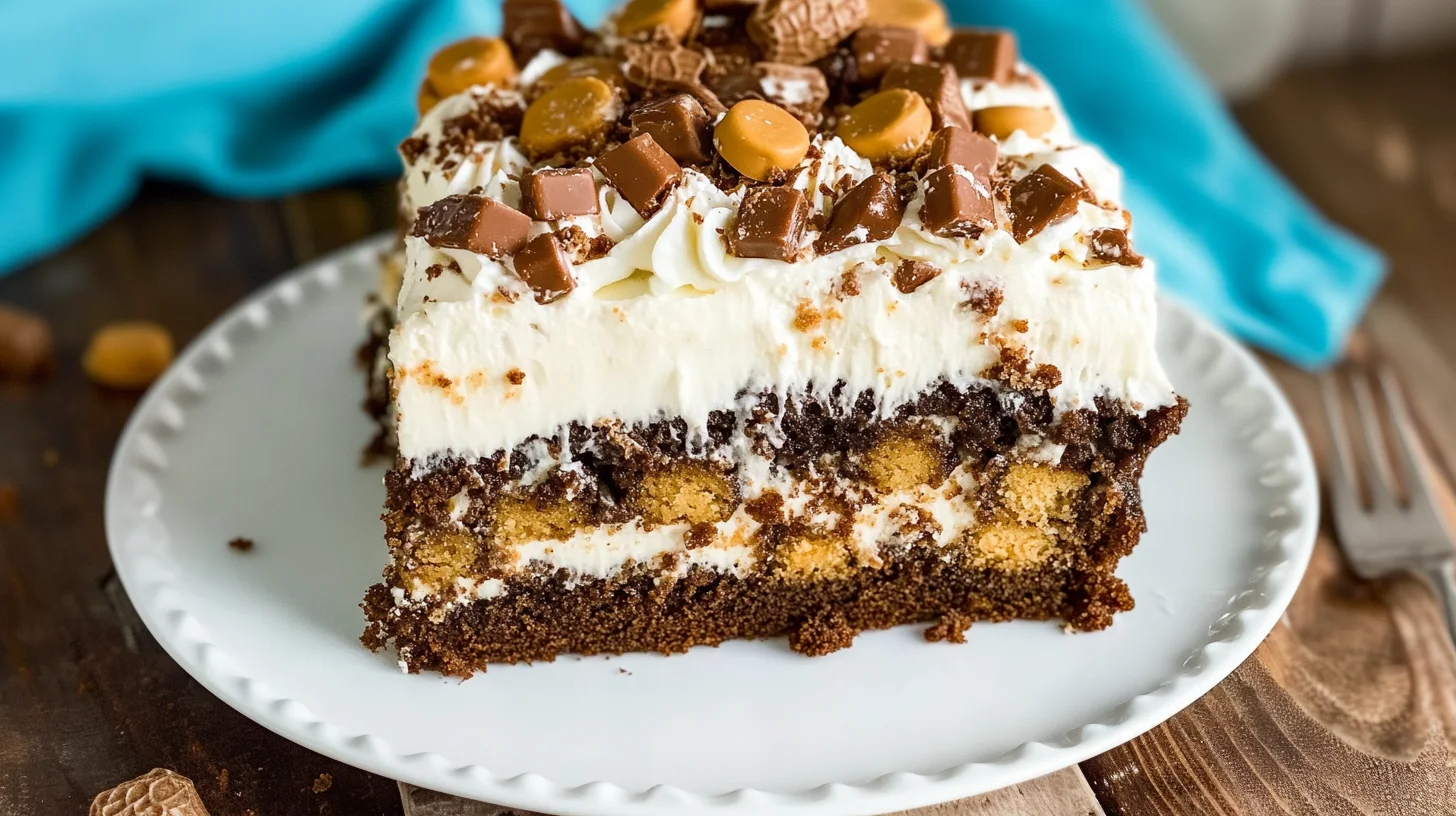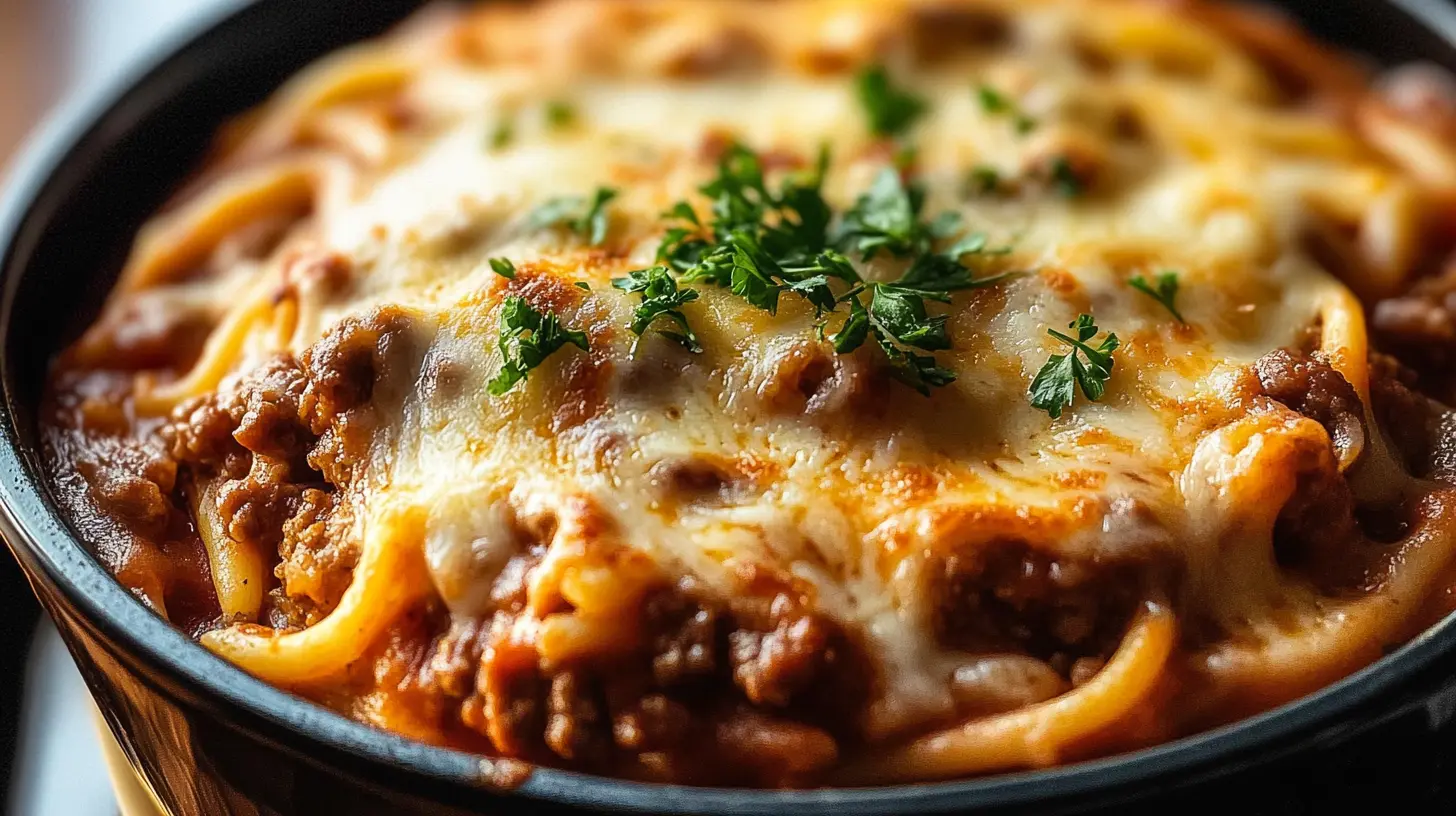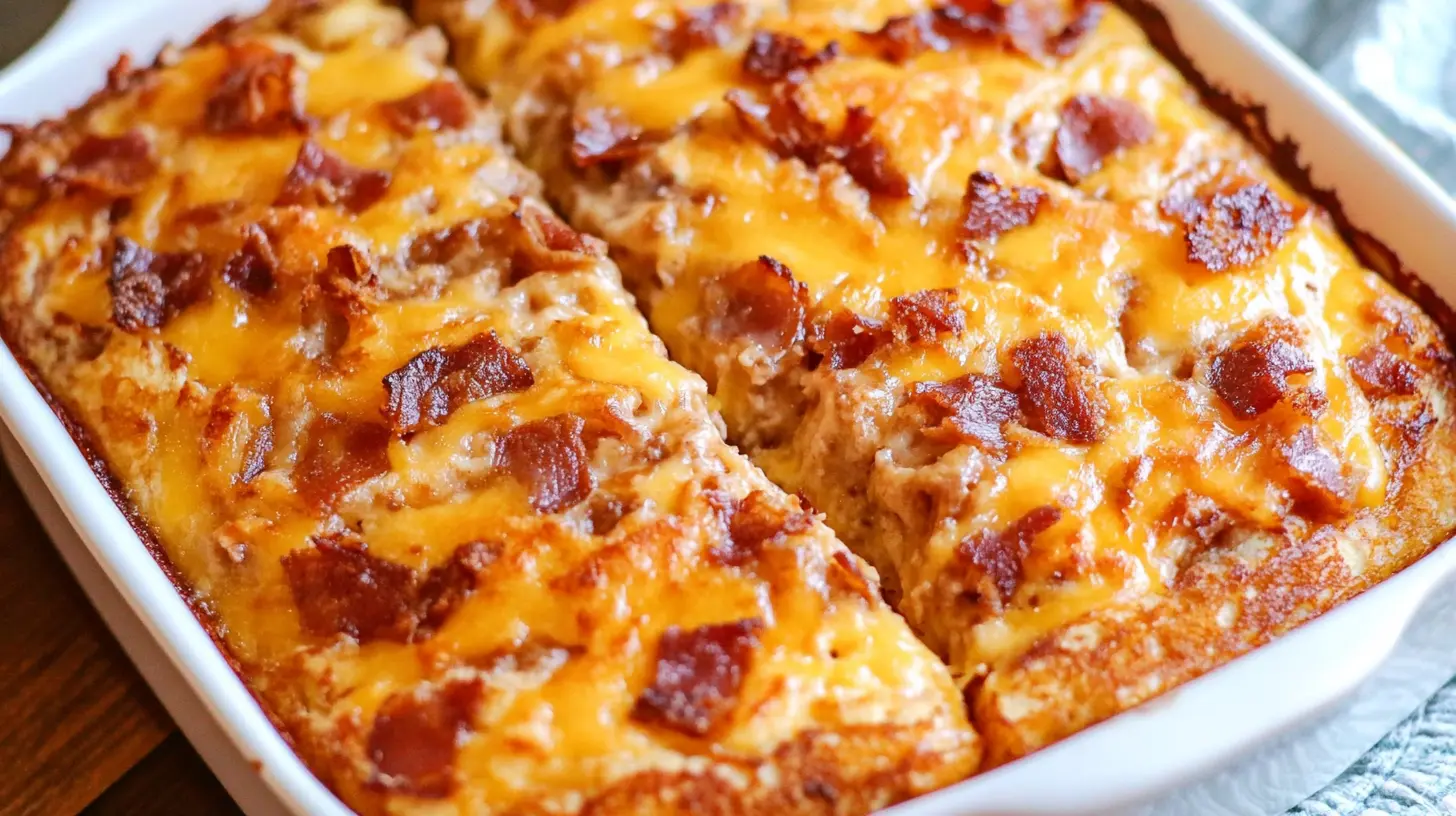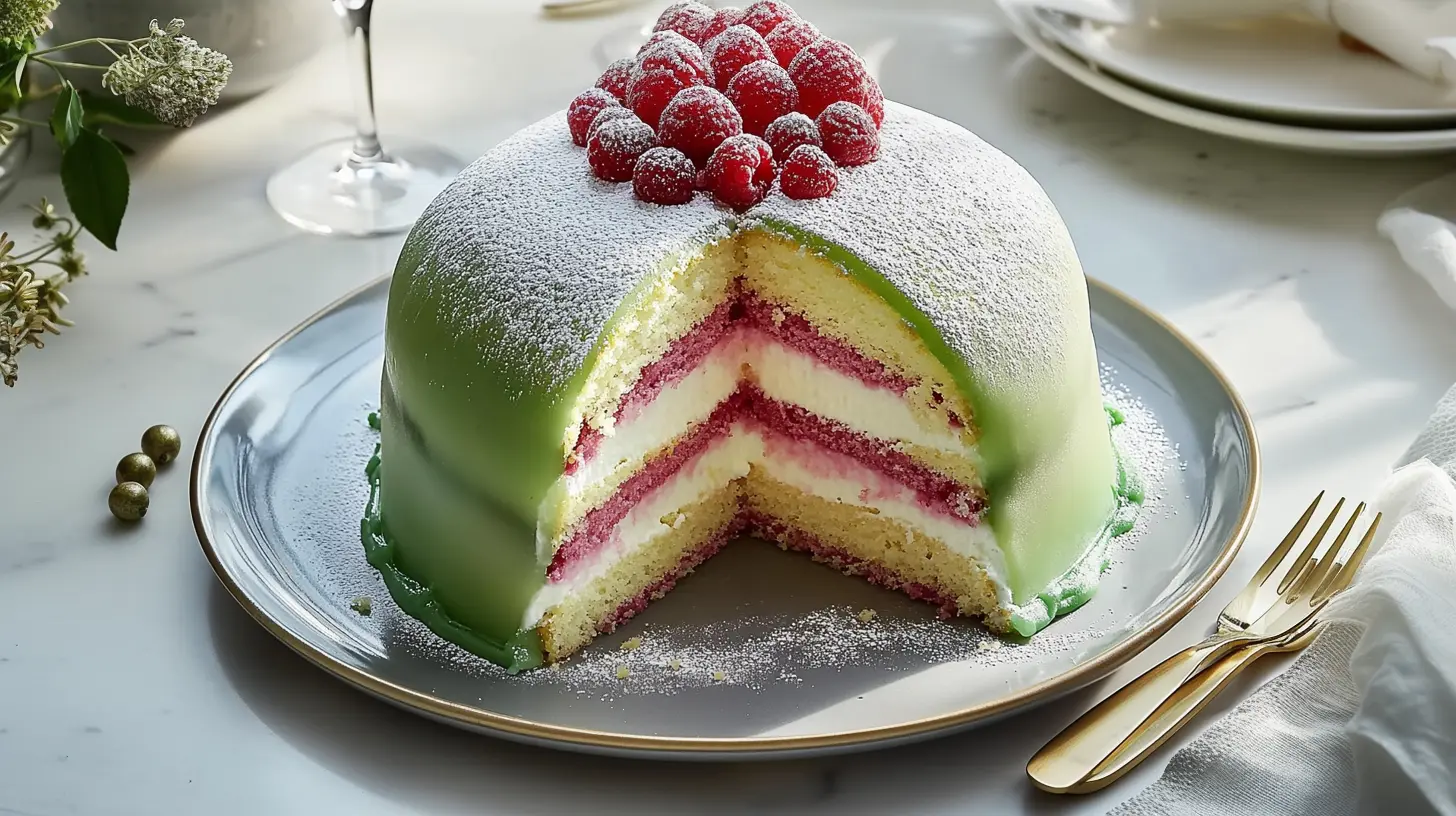Introduction to Butterfinger Poke Cake
If you’re a fan of the classic Butterfinger candy bar, you’re in for a real treat with this Butterfinger Poke Cake. Combining the flavors of chocolate, caramel, and crunchy Butterfinger pieces, this poke cake is an indulgent dessert that’s perfect for parties, family gatherings, or even a weeknight treat. The best part is how easy it is to make, even for beginners.
This poke cake recipe is a favorite for busy parents, baking enthusiasts, and anyone who loves a decadent yet simple dessert. The cake’s moist texture, created by pouring caramel sauce over the baked cake, pairs perfectly with the crunchy candy topping. It’s ideal for anyone looking for a unique dessert to try at home. For more creative and easy dessert ideas, check out our cheesy hot beef sandwich recipe or fried apple pies recipe.
Benefits and Advantages of Butterfinger Poke Cake
1. Easy and Quick to Make
This Butterfinger Poke Cake is perfect for home cooks and busy individuals. It uses a boxed cake mix as a base, cutting down on prep time, and the filling and toppings are simple ingredients like caramel sauce and whipped topping.
2. Decadent Flavors
Butterfinger Poke Cake offers an incredible mix of flavors and textures. The moist chocolate cake combined with caramel filling and the crunchy Butterfinger candy topping creates a dessert experience that’s hard to resist.
3. Crowd-Pleaser
Whether you’re serving a large family gathering or bringing a dessert to a party, this cake is sure to be a hit. Its rich flavor profile appeals to all ages, making it an excellent option for any celebration.
Looking for another party-perfect dish? Try our ramen lasagna recipe, which combines unexpected ingredients for a memorable meal.
Ingredients Overview
Essential Ingredients for Butterfinger Poke Cake
- For the Cake:
- 1 box chocolate cake mix (or homemade chocolate cake recipe)
- 3 large eggs
- 1/2 cup vegetable oil
- 1 cup water
- For the Filling:
- 1 can sweetened condensed milk
- 1 jar caramel sauce
- For the Topping:
- 1 cup crushed Butterfinger candy bars
- 1 container whipped topping (such as Cool Whip)
Dietary Substitutions to Customize Your Butterfinger Poke Cake
- Gluten-Free Option:
Use a gluten-free chocolate cake mix or make your own gluten-free cake with almond flour or a similar substitute. - Vegan Option:
Replace eggs with a flax egg (1 tablespoon flaxseed meal mixed with 3 tablespoons water per egg), and use a dairy-free whipped topping and vegan caramel sauce. - Low-Sugar Option:
Substitute regular caramel sauce with a low-sugar or sugar-free version. You can also use a sugar-free cake mix to reduce the overall sugar content.
For more recipes that cater to specific dietary needs, check out our protein banana bread for a high-protein dessert option.
How to Prepare the Perfect Butterfinger Poke Cake: Step-by-Step Guide
First Step: Bake the Cake
- Preheat your oven to 350°F (175°C) and grease a 9×13-inch baking pan.
- In a large bowl, combine the chocolate cake mix, eggs, oil, and water. Mix until smooth.
- Pour the batter into the prepared pan and bake for 25-30 minutes, or until a toothpick inserted into the center comes out clean.
- Allow the cake to cool for 10 minutes.
Second Step: Poke and Fill the Cake
- Using the handle of a wooden spoon or a large straw, poke holes all over the cake. Make sure the holes are evenly spaced for optimal filling distribution.
- Pour the sweetened condensed milk over the cake, allowing it to seep into the holes.
- Next, pour the caramel sauce over the cake, letting it soak into the cake through the holes.
Third Step: Add the Topping
- Once the cake has cooled completely, spread the whipped topping evenly over the top of the cake.
- Sprinkle the crushed Butterfinger candy bars generously over the whipped topping.
- Refrigerate the cake for at least 2 hours before serving to allow the flavors to meld together.
Mastering Butterfinger Poke Cake: Advanced Tips and Variations
1. Add Extra Crunch
For even more texture, consider adding chopped nuts like peanuts or pecans along with the crushed Butterfinger candy. This adds another layer of crunch to complement the moist cake and creamy filling.
2. Make It a Peanut Butter Dream
For a twist on the classic, add a layer of peanut butter between the caramel and whipped topping. This creates a rich, nutty flavor that pairs beautifully with the Butterfinger candy.
3. Try Different Candy Toppings
If you love the poke cake concept but want to try something new, swap out the Butterfinger topping for other candy favorites like crushed Reese’s Pieces, Snickers, or Heath bars.
For more dessert inspiration, explore our apple crumble cheesecake recipe for a fusion of fruity and creamy flavors.
How to Store Butterfinger Poke Cake: Best Practices
Refrigeration
Store your Butterfinger Poke Cake covered in the refrigerator for up to 4 days. The caramel and whipped topping need to stay chilled to maintain their texture and freshness.
Freezing
You can freeze Butterfinger Poke Cake for up to 2 months. Cut the cake into individual slices, wrap them in plastic wrap, and store in a freezer-safe container. To serve, thaw in the refrigerator overnight.
For additional storage tips for baked goods, check out our sourdough sandwich bread guide.
Nutritional Value of Butterfinger Poke Cake
Here’s an approximate nutritional breakdown per serving:
- Calories: 450
- Protein: 6g
- Fat: 20g
- Carbohydrates: 62g
- Sugar: 45g
- Fiber: 2g
Keep in mind that nutritional values may vary depending on ingredient substitutions.
FAQs: Frequently Asked Questions About Butterfinger Poke Cake
Why is My Poke Cake Soggy?
Why is My Poke Cake Soggy?
Your poke cake might become soggy if too much liquid or filling is poured into the holes. Additionally, when the cake doesn’t have enough time to absorb the liquid, it can result in an overly wet texture. To prevent this, make sure to use a moderate amount of filling and allow the cake to chill properly in the refrigerator for several hours. Furthermore, if the cake is left at room temperature for too long, it can also contribute to a soggy texture. Moreover, using a denser cake base might help absorb the filling more evenly.
What is the Best Way to Poke Holes in a Poke Cake?
The best way to poke holes in a poke cake is by using the handle of a wooden spoon, a large straw, or a skewer. After the cake has slightly cooled, gently poke evenly spaced holes throughout the cake. Additionally, ensure that the holes are deep enough for the filling to seep in but not too wide, as this can cause the cake to fall apart when serving. Furthermore, creating evenly distributed holes ensures that the filling reaches every part of the cake, making each bite delicious.
What is Poke Cake Made Of?
A poke cake is typically made of a basic cake base, which can either be a boxed mix or a homemade cake. After baking, you poke holes into the cake and pour in a liquid or creamy filling like pudding, Jell-O, or condensed milk. Next, the cake is topped with whipped cream, frosting, or crushed toppings such as candy or fruit. Additionally, poke cakes are incredibly versatile, allowing for a variety of flavor combinations and creative toppings.
Do You Poke Holes in a Cake When It’s Hot or Cold?
You should poke holes in the cake when it’s slightly warm, but not hot. If the cake is too hot, it may crumble when you poke holes, and the filling can become too runny. However, if the cake is cold, the filling may not absorb as easily, leaving parts of the cake dry. Therefore, let the cake cool for about 10-15 minutes after baking before poking the holes for the best results. In addition, this ensures that the cake holds its structure while allowing the filling to permeate evenly.
How Can You Prevent the Soggy Bottom of the Cake?
To prevent a soggy bottom, make sure you don’t overdo the liquid filling. Furthermore, allow the cake to chill in the fridge after pouring the filling to ensure it sets properly. You can also try using a denser cake that absorbs liquid more evenly. Additionally, avoid pouring too much filling into one area and spread it out evenly across the entire cake to achieve the perfect balance of moisture and texture.
Why is My Jam Cake Dry?
A jam cake can become dry for several reasons. Firstly, overbaking the cake can lead to moisture loss. Always check for doneness with a toothpick rather than relying solely on baking time. Additionally, using too little fat or not enough jam in the recipe can make the cake dry. To prevent dryness, make sure the cake batter is well-balanced with moisture-rich ingredients like butter or oil. Moreover, using a high-quality jam that provides adequate moisture can help keep the cake soft.
What is the Poke Test for Cake?
The poke test for cake is a method to check if your cake is done. To perform this test, gently poke the center of the cake with your finger. If the cake springs back up, it’s done baking. However, if it leaves an indentation, it likely needs more time in the oven. Alternatively, you can use a toothpick to check for doneness—if it comes out clean, the cake is ready. Furthermore, testing the cake in multiple areas ensures that it’s evenly baked throughout.
Do Poke Cakes Need to Be Refrigerated?
Yes, poke cakes generally need to be refrigerated, especially if they contain perishable fillings such as pudding, whipped cream, or condensed milk. The refrigeration helps set the filling and maintains the freshness of the cake. Store the cake covered in the fridge for up to four days to ensure it stays fresh and moist. Additionally, refrigerating the cake prevents the whipped topping from melting or becoming too soft, which helps maintain its appearance and taste.
What is the Proper Way to Eat a Poke Bowl?
When eating a poke bowl, it’s best to mix all the ingredients together. This ensures that you get a balanced bite of protein, rice, and toppings like seaweed, avocado, and sesame seeds. Since poke bowls are highly customizable, you can adjust the flavors to your liking, adding soy sauce, sriracha, or wasabi for an extra kick. Additionally, the combination of flavors and textures in each bite is what makes a poke bowl so enjoyable. For more about the poke dish and its origins, check out the Poke Wikipedia page.
Why is Poke So Delicious?
Poke is delicious because it combines fresh, high-quality ingredients with rich, umami flavors. The fish, typically marinated in soy sauce, sesame oil, and other seasonings, absorbs the flavors beautifully. Additionally, the textures in a poke bowl—soft fish, crunchy vegetables, and creamy toppings like avocado—create a satisfying eating experience. Furthermore, each bite is balanced with flavors ranging from salty to sweet, and savory to spicy, making it a well-rounded dish.
When Did Poke Cake Become Popular?
Poke cake first gained popularity in the 1970s, when Jell-O introduced the idea of using its products to create fun, colorful desserts. The ease of preparation and the visual appeal of the liquid fillings seeping into the cake made it a popular choice for home bakers. Over the years, variations of poke cake have evolved, using everything from pudding to candy bars as fillings and toppings. Additionally, its versatility has kept it a favorite among bakers, allowing for endless creative combinations.
Is Poke Just Raw Salmon?
No, poke is not just raw salmon. While raw fish, particularly tuna or salmon, is commonly used in poke, the dish can also be made with other proteins such as tofu, shrimp, or cooked meats. The key to poke is the combination of fresh ingredients and flavorful seasonings like soy sauce and sesame oil, making it versatile for various dietary preferences.
Is It OK to Eat Poke Every Day?
Eating poke every day can be a healthy choice, depending on how you prepare it. When made with fresh, lean proteins like tuna or salmon and combined with vegetables and whole grains, poke becomes a highly nutritious meal. However, you should be mindful of high-sodium marinades or calorie-laden toppings, as these can make poke less healthy. Therefore, moderation is key, particularly when consuming raw fish regularly. Additionally, it’s always best to vary your protein sources to maintain a balanced diet.
Is Poke Hawaiian or Japanese?
Poke is originally a Hawaiian dish, although it incorporates strong Japanese influences. This is largely due to the use of ingredients like soy sauce, rice, and sashimi-style fish. The word “poke” means “to slice” in Hawaiian, which refers to the way the fish is cut into cubes. Over time, poke has evolved to include a mix of Hawaiian and Asian flavors, turning it into a popular fusion dish enjoyed in many parts of the world.
How is Poke Pronounced?
Poke is pronounced “POH-keh,” with each syllable clearly enunciated. The term comes from Hawaiian, where it refers to the practice of slicing or cutting crosswise, which is how the raw fish in poke is traditionally prepared.
Yes, simply swap the chocolate cake mix for a gluten-free version, and the rest of the ingredients can remain the same.
For more cake ideas, explore our Hawaiian pineapple cake recipe.
Conclusion
The Butterfinger Poke Cake is a truly decadent and easy-to-make dessert, blending the rich flavors of chocolate, caramel, and crunchy Butterfinger candy into a treat that everyone will love. Its simplicity, along with its versatility, makes this poke cake a go-to recipe for any gathering, whether it’s a casual family dinner or a special celebration. Whether you’re customizing it to accommodate dietary needs or experimenting with exciting flavor variations, this poke cake is sure to quickly become a favorite in your kitchen and a hit with anyone who tries it.
For more creative dessert ideas, be sure to explore our churro cheesecake recipe.




